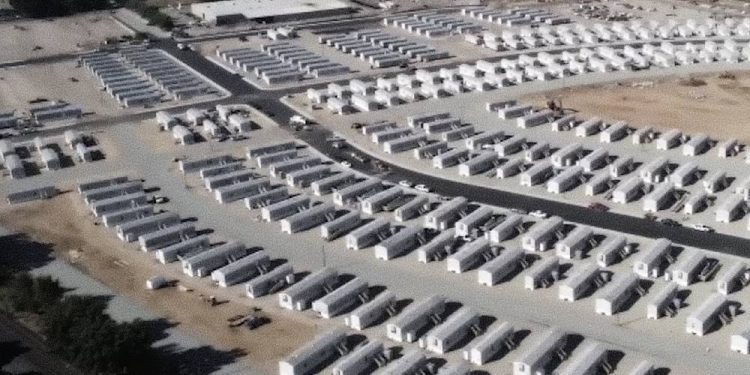(Natural News)—Former 24-year Customs and Border Patrol (CPB) veteran J.J. Carrell got the chance to interview Christie Hutcherson of Women Fighting for America about a sinister plot by the globalists to build large-scale prison structures and compounds in all 50 states, purportedly to house illegal aliens but probably actually to imprison Americans in concentration camps.
Hutcherson has an extensive background in federal contracting having worked at forward operating bases (FOBs) in military war zones. Her company built soft-sided structures, water facilities and other necessities for soldiers as part of a multi-billion dollar operating agreement with Washington, D.C.
Because she has access to the federal database of contract bids for all of the government projects going on at any given time, Hutcherson can see specifically and exactly what is going on behind the scenes at any given time.
“There are bids for detention facilities being built in all 50 states in America,” Hutcherson explained to Carrell in the interview, which was also covered by Redacted – watch below:
“I go in the database, J.J, and there are detention facility bids to build individual detention facilities in every state in the union. Who do you think they’re built for? Are they built for all the illegal aliens or unaccompanied alien children? Of course not.”
(Related: Back in early 2022, we warned you that some politicians have been pushing for concentration camps to be built in the United States – well, it looks like that time has arrived.)
Concentration camps in America
Carrell, who considers himself something of an expert on these types of things, says he was shocked at what Hutcherson had to say. He says he fell for the idea that these detention facilities are for illegals and migrants, not Americans.
“Most of these ICE facilities are completely empty,” Carrell explains. “I’ve talked to my buddies in Texas and in San Diego, I’ve talked to my ICE supervisors, and they tell me that they’re empty.”
“So you’re talking anywhere from 30,000 to 40,000 beds across America, mainly on the southern border, are empty. Why are they empty? Because we have massive catch and release.”
Back in the old days when Carrell was more directly involved in border work, he says they did not just catch and release illegal aliens. They would transport the illegals they caught to ICE facilities for processing and eventual deportation.
“They went and they waited there a week, two weeks, a month, whatever it was, to go in front of the judge, fined or deported, deported or found to be guilty of reentering as a felon, then they spent time in federal prison, then they would be deported – so we had all this bed space,” Carrell explains.
“I get someone that’s a reported felon now, I’m releasing them on the street. So you go from arresting people three years ago, setting them up for deportation and prosecution, goes to a camp space in an ICE facility, then the courts and deportation – not now. Everyone gets arrested by the Border Patrol, they quickly “vet” them, then release them.”
Even more disturbing is the fact that there are closer to 30 million, if not more, illegals who have flooded the U.S. just in the past couple years. This is enough to replace the populations of about 36 states, Hutcherson further says.
“Why would they need to continue to [house them in camps] that if they’re trying to absorb, assimilate, etc.? I believe it’s to do like what the Nazis did to the Jews – concentration camps, processing facilities. They’re going to need some place to process the dissidents.”
The worst time in human history is almost here. Learn more at Tyranny.news.
Sources for this article include:





A great and scarey article —- many thanks!